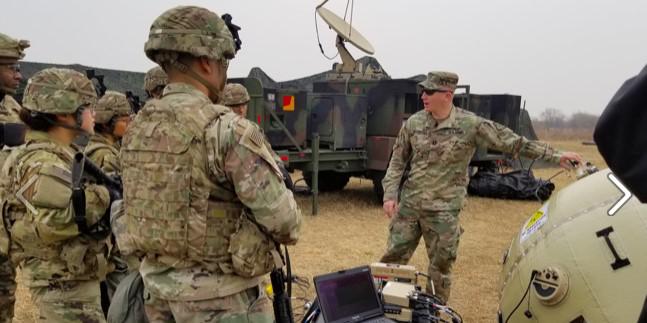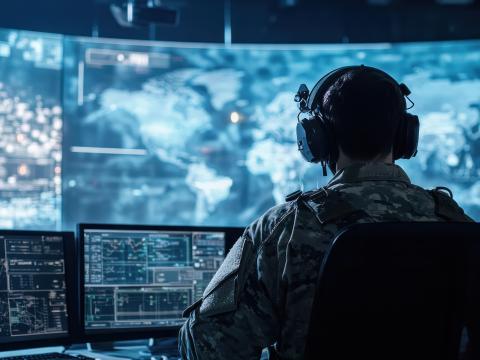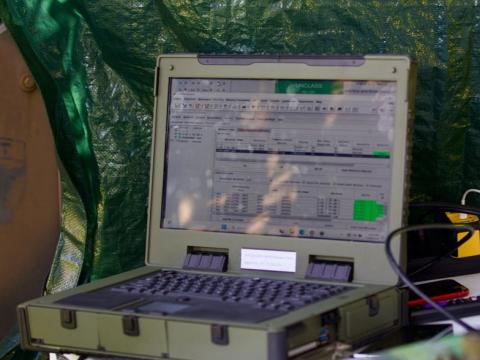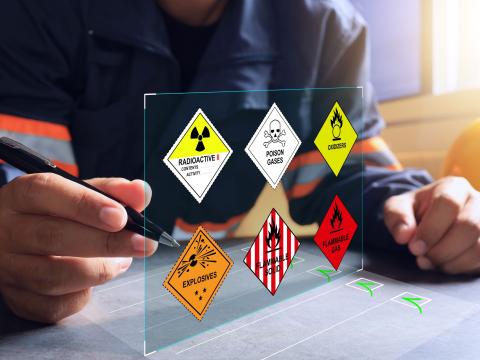Asset Management Propels the Army’s C5ISR Readiness
The U.S. Army’s Communications and Electronics Command, or CECOM, located at Aberdeen Proving Ground, Maryland, is engaging in a robust asset management program to make sure command, control, communications, computing, cyber, intelligence, surveillance and reconnaissance (C5ISR) technologies are ready for troops around the world, said Maj. Gen. Mitchell Kilgo, USA, CECOM commander.
Gen. Kilgo presented a keynote address at AFCEA’S TechNet Augusta Solutions Series virtual event on April 21. “For a little more than a year now the Army's been very serious about getting back to large-scale combat operations,” the commander said. “This is what our Army is built for and is what we focus on in order to win the next battle in the future.”
In CECOM’s preparations for supply availability and equipment readiness of C5ISR technologies, data analytics and logistics information are “at the core” of the command’s efforts, Gen. Kilgo noted. In addition, their asset management effort relies on C5ISR Lifecycle Analysis Teams, known as C-LATs.
In CECOM’s preparations for supply availability and equipment readiness, data analytics and logistics information are “at the core” of the command’s efforts, says Maj. Gen. Mitchell Kilgo @USArmy @CECOMAPG #AFCEATechNet pic.twitter.com/SmG7pTFdl5
— Kimberly Underwood (@Kunderwood_SGNL) April 21, 2021
“We push the C-LAT teams out, in a combination of members from the Tobyhanna Army Depot, as well as from the Integrated Logistics Support Center here at Aberdeen,” Gen. Kilgo noted.
The teams support active duty components (COMPOs 1, 2, 3) by assessing their C5ISR systems. “The C-LATS are responsible for sustaining those systems,” the general explained. The teams rate the equipment readiness on a scale one through five, with one being the best. All systems categorized as category four or five are then scheduled for induction into the depot to be overhauled, he stated.
“In addition to Tobyhanna, we are also leveraging our depot maintenance facilities at Fort Bragg, Fort Hood, Joint Base Lewis-McChord, in Korea and in Europe,” he explained. “We have a number of assets being repaired and overhauled at our depot maintenance facilities because it reduces the amount of time that it takes to get that asset back to the field. For our COMPO 2 forces, about a third of their equipment assessments will be conducted at our depots in order to turn those back to the States and those divisions as fast as we possibly can. So, we are working our asset management and our schedule planning down to the bumper number and serial number of those C5ISR assets. We are taking the guesswork out of this for our units.”
We don’t need your secret sauce, but your systems need to be able to talk to our systems and integrate with our standards, says Maj. Gen. Mitch Kilgo, @CECOMAPG Commander #AFCEATechNet pic.twitter.com/NcVRyG6AjY
— Kimberly Underwood (@Kunderwood_SGNL) April 21, 2021
The commander also noted that the Army Medical Logistics Command (AMLC) is now a part of CECOM. It reached initial operating capability in June of last year, is expected to be at full operational capability this summer and at complete operational level with CECOM in October.
Similar to other lifecycle management commands, the AMLC is focused on Class A medical logistics support, repair and overall. With the ongoing pandemic, the AMLC also is responsible for distributing and sustaining personal protective equipment across the Army Material Command (AMC) and greater Army enterprise.
“As AMLC became a part of AMC and then later CECOM, one of the things we discovered was that we did not treat their medical logistics in the same way that we do for C5ISR readiness,” Gen. Kilgo said. “So, we're evolving the AMLC process into an automated processes that focuses on data, and leveraging our data to demonstrate predictable maintenance for logistics components.”
In the meantime, the command is “still very heavily focused on sustaining C5ISR readiness in hardware platforms as well as software,” the general stated.






Comments